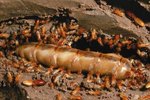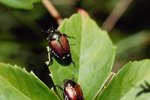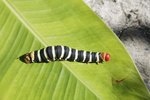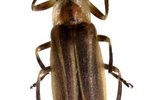
Warm weather brings out all manner of bugs, among them caterpillars and grubs. Both the caterpillar and the grub are insect larvae, but they come from different families. Grubs are the larvae of various types of beetles, while caterpillars grow up to become butterflies or moths. At first glance they may appear quite similar, but they do have clear differences when you know what to look for.
Grub and Caterpillar Basics
The main job of both caterpillars and grubs is to eat and grow, preparing themselves for the day when they will undergo metamorphosis and become adult members of their species. Some of them, like the gypsy moth (Lymantria dispar) and tomato hornworm (Manduca quinquemaculata) eat leaves, fruit and other parts of plants out in the open where they’re easily seen. Others, like any of the hundreds of species of white grubs, hide in the soil and may not get noticed until they’ve already done a lot of damage.
Important Terms
When checking out the differences between caterpillars and grubs, it’s helpful to be clear on a few important terms. The head is the front of the larva and contains its mouth and eyes. Immediately behind the head are three segments that make up the thorax, and behind that are between 8 and 10 segments that comprise the abdomen. Thoracic legs attach directly to the segments of the thorax. Fleshy legs are short sections extending down from the body that the larva uses to move around; fleshy legs do not have segments.
Look at the Legs
The legs of caterpillars and grubs are not the same, but it may take a close look to spot the differences. Caterpillars have relatively thick, fleshy legs arranged in pairs along the abdominal section of their bodies. Count the pairs; caterpillars will have five or fewer pairs of fleshy legs, though they may also have several pairs of thoracic legs. Grubs have very short thoracic legs and no abdominal legs; some types of grubs have no legs at all.
The Body Beautiful
Caterpillars often have bright colors and distinctive markings such as lines or other patterns along their bodies. The tomato hornworm, for example, is readily identified by the eight “V”-shaped marks running down its sides. Caterpillars may also be covered with hair or spines, like one of the easily-spotted wooly bears that belong to the family Arctiidae. Grubs are rather dull and don’t typically have much color. They are usually off-white or beige, though they may sometimes have a few brown markings on them.
References
- University of Illinois Extension: Gypsy Moth
- University of Florida IFAS Extension: Tobacco Hornworm and Tomato Hornworm
- Texas A&M Extension: White Grubs in Texas Turfgrass
- University of Nevada Reno: Caterpillars.org: Life Cycle of the Butterfly or Moth
- Cornell University Integrated Pest Management: A Grub's Life: Egg to Beetle
- http://www2.ca.uky.edu/entomology/entfacts/ef017.asp
- University of Wisconsin Milwaukee: Woolly Bear
Photo Credits
-
Brand X Pictures/Brand X Pictures/Getty Images




